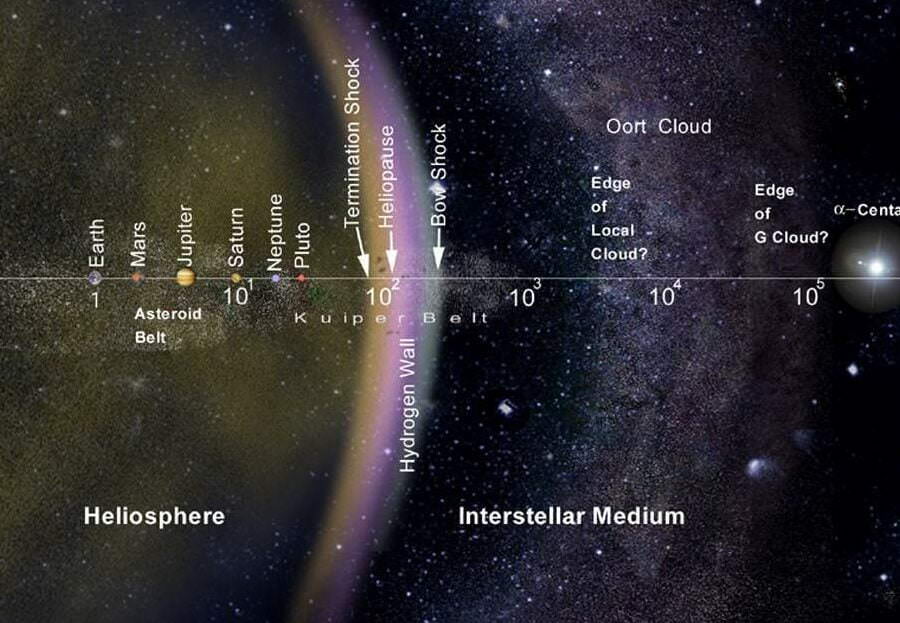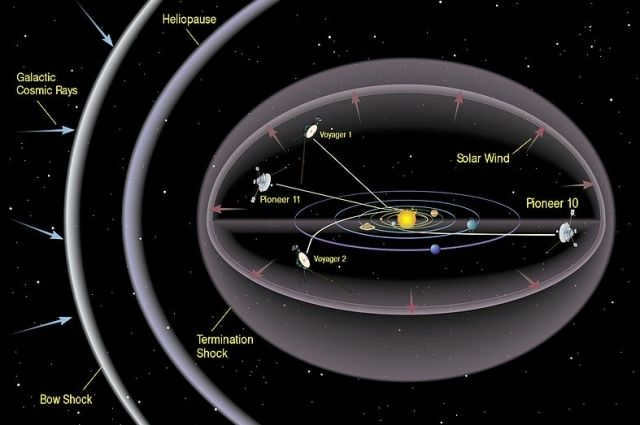
NASA has reported that the Voyager 1 probe, which was launched in 1977 and has long since left the solar system, has started transmitting peculiar data to Earth. These data do not align with the probe’s movement and position in outer space. Suzanne Dodd, who is in charge of the project at NASA’s Jet Propulsion Laboratory in Southern California, has described the data as chaotic and lacking coherence. Interestingly, the Voyager’s antenna is in perfect condition.
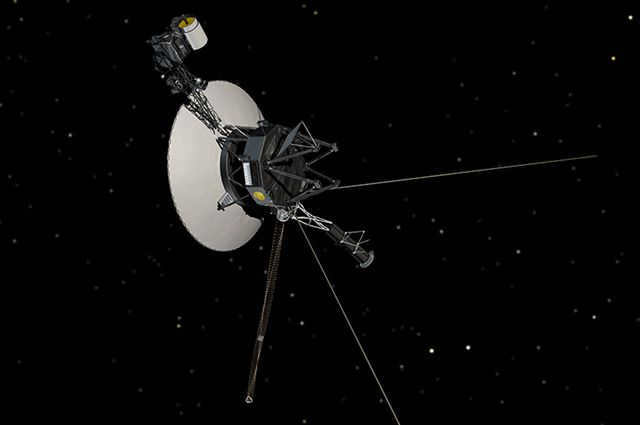
Seizing this chance, AiF.ru reminisces about the remarkable space expedition that will mark its 45th anniversary this year and continues to achieve new milestones with every interaction with Earth.
When there is limited sunlight
The term Voyager, in English, signifies a “traveler”, and it was aptly chosen for the pair of spacecrafts that were launched into the vastness of the solar system in 1977. The purpose of this mission was to investigate far-off planets. The average distance to the closest one, Jupiter, is about 778 million kilometers, which meant that Voyager 1 and Voyager 2 had an extraordinary expedition ahead of them. And Jupiter served as just the initial stop on their remarkable journey.
It is worth noting that Voyager 2 was the pioneer in venturing into outer space. This momentous event took place on August 20, 1977, followed by the launch of Voyager 1 just 16 days later. Both spacecrafts shared similar characteristics, with a mass of approximately 721 kilograms each. They were ingeniously designed autonomous robots that boasted cutting-edge scientific instruments of their time, including television cameras, spectrometers, magnetometers, plasma detectors, as well as detectors for charged particles and cosmic rays. The technology behind these spacecrafts underwent meticulous refinement and optimization.
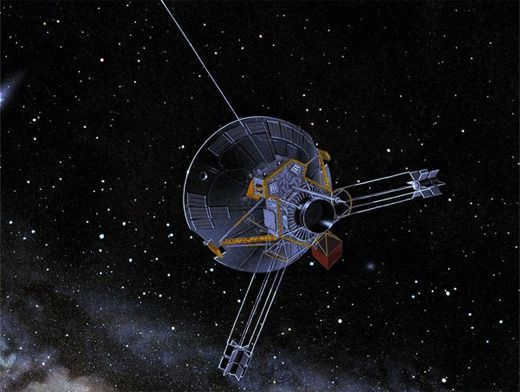
Naturally, the power sources were of utmost importance. To tackle the issue of insufficient radiation flux from the Sun at such distances, similar to the probes exploring the planets of the Earth group, solar batteries were deemed impractical. Engineers proposed an alternative solution for the “Voyagers” by installing radioisotope thermoelectric generators, three in total. These generators utilized plutonium-238 as fuel, which releases heat as it decays. The heat then warms up one of the junctions of the thermocouple, while the other junction faces the coldness of space. This temperature difference allows the generators to generate the necessary electricity.
The initial encounter with the stars
In 1979, the Voyagers successfully arrived at Jupiter, and in the subsequent years of 1980 and 1981, they continued their journey to Saturn. These remarkable spacecraft were able to capture and transmit high-quality, detailed images of these planets and their accompanying moons. This marked a significant milestone in space exploration. Following this success, NASA made the decision to embark on an “optional” mission. Given the excellent condition of the Voyager probes, Voyager-2 was chosen to continue its journey to the outer planets of Uranus and Neptune. This historic mission made Voyager-2 the first spacecraft to venture into the vicinity of the seventh and eighth planets in our solar system.
“Voyager 1 accomplished several remarkable feats. Its final scientific mission involved examining the outer regions of the heliosphere and the vast expanse beyond known as the interstellar medium. This is where the solar wind gradually loses its momentum and the Sun’s influence diminishes. A decade ago, the spacecraft reached this area and became the first human-made object in history to venture into interstellar space after surpassing the heliosphere’s boundaries. Additionally, the probe has provided valuable insights into the environmental conditions of this remote domain. In 2021, Voyager 1 transmitted groundbreaking information back to Earth – the faint sound of interstellar gas. This unique data was captured using a plasma detector, the same instrument that was used over 40 years ago to study the magnetospheres of Jupiter and Saturn. Remarkably, this instrument is still operational.”
“Voyager 1 is constantly breaking new records. As of August 2021, the spacecraft has surpassed a distance of 23 billion kilometers from the Sun, making it the farthest any human-made object has ever traveled. Every time Voyager 1 transmits a signal back to Earth, it does so from an even greater distance, further solidifying its own record.”
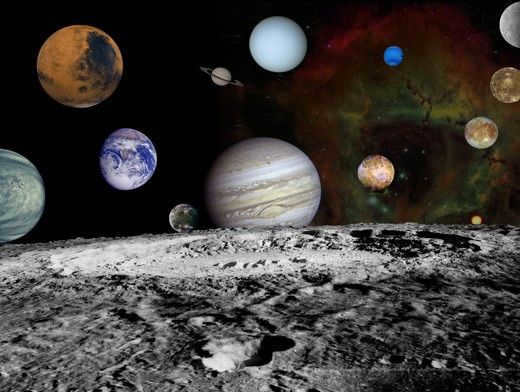
It’s quite surprising that the original mission duration for both “Voyagers” was only 5 years, yet they are still operational after completing their tasks. What’s even more remarkable is that their onboard equipment dates back to the 1970s! The transmitter on board has a power of approximately 20 watts, equivalent to a refrigerator light bulb. Despite this, the signal travels over 20 billion kilometers and is received by massive satellite dishes located in various parts of the world, providing scientists with invaluable information about distant planets.
The Voyager spacecraft can be rightfully considered as testaments to the incredible capacity of the human intellect, and it holds immense symbolism that each of these spacecrafts carries a profound message intended for civilizations beyond our own. This message is encapsulated within what is commonly referred to as the Voyager gold record.
The gold-plated videodiscs that make up this record contain a total of 115 slides, each showcasing breathtaking views of our beloved planet Earth, its diverse landscapes, captivating scenes from both animal and human life, as well as intricate visual representations of the DNA molecule. In addition to these visual wonders, the record also boasts a remarkable collection of audio recordings, featuring timeless compositions by esteemed musical geniuses such as Bach, Mozart, Beethoven, and even the legendary Louis Armstrong and Chuck Berry. Furthermore, the record includes more intimate sounds, such as the tender whispers of a mother and the innocent cries of a baby, as well as a wide array of natural sounds and greetings in an impressive 55 languages from around the world. Among these languages, one can also find a heartfelt greeting in Russian: “Hello, I greet you!”
The Voyagers are equipped with aluminum cases that contain records. These records are accompanied by a phonograph capsule and a needle, allowing them to be played. The cases also feature an engraved instruction chart on how to use the records.
In approximately 40,000 years, Voyager 1 is projected to pass by the star Gliese 445 in the constellation Giraffe, near Polaris, at a distance of 1.6 light-years. If intelligent beings exist in this area, they will have the opportunity to gain knowledge about the third planet in the yellow dwarf system, which is situated on the inner edge of the Orion arm of the Milky Way galaxy. They may also learn about the peculiar civilization that once inhabited it.
Therefore, it is possible that the Voyager mission is not yet complete.
September 5 marked the 45th anniversary of the first spacecraft to venture beyond our solar system – the iconic Voyager 1. Originally intended for exploring the outer planets of our own system, little did anyone know that nearly five decades later, this remarkable device would still be operational, albeit millions of miles away from home. To commemorate this milestone occasion, Space.com revisited the probe’s fascinating journey – here are the key highlights from the article.
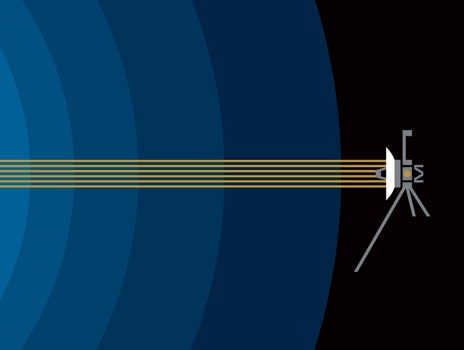

“Voyager 1” Completed Orbit around Jupiter
“Voyager-1” came close to remaining grounded as its launch vehicle depleted its fuel supply, but the spacecraft managed to take flight nonetheless. In addition, it surpassed its twin, Voyager-2, and became the first to traverse the asteroid belt situated between Mars and Jupiter. In April 1978, the probe transmitted its initial images of the planet from a distance of 266 million kilometers away from its origin.
Thanks to these images, scientists at NASA have made a number of significant findings. “Voyager 1” not only managed to capture a delicate ring encircling the colossal planet, but also detected the presence of two previously unknown moons of Jupiter – Phoebe and Metida. In addition, the detailed photographs of the surface of Io have provided valuable clues about the existence of volcanoes and the occurrence of seismic activity on the moon. Furthermore, the images of Europa’s remarkably smooth surface, marked by straight lines, have strongly suggested the presence of ice and the potential existence of an entire ocean beneath its crust.
“Voyager 1 explored Saturn and its moons
Afterwards, the spaceship continued on its original path. This led Voyager 1 to Saturn, where its mission was to gather information about one of the planet’s rings, which had been previously discovered by the Pioneer-11 probe a year earlier. However, Voyager 1’s camera had a higher resolution, allowing the spacecraft to detect two previously unknown moons (Prometheus and Pandora): their orbits helped maintain the stability of the icy ring particles. Additionally, Voyager 1 captured images of Atlas, a new ring, and various other moons of Saturn.”
This marked the completion of Voyager 1’s primary objective: researchers then shifted their focus to monitoring the spacecraft as it propelled towards interstellar space. However, just before venturing into the vastness of outer space, it captured an iconic image that would go down in the annals of space exploration: a photograph of Earth taken from a staggering six billion kilometers away, aptly named the “Pale Blue Dot”.
On August 25, 2012, Voyager 1 departed from the heliosphere, which is a vast bubble filled with charged particles emitted by the Sun. However, this significant finding was not announced until a year later when the spacecraft’s plasma wave detection instrument detected a strong solar eruption. This valuable information enabled scientists to deduce that the region surrounding Voyager 1 is considerably more dense compared to the interior of the heliosphere. At the time of the discovery, the spacecraft was situated 121 astronomical units away from the Sun, equivalent to over 18 billion kilometers.
Now you can track the progress of Voyager-1’s journey on NASA’s official website. In the past decade, the spacecraft has gathered a wealth of valuable data about our galactic neighborhood. One significant finding is that the levels of cosmic radiation beyond the heliosphere are exceptionally high. Engineers are also amazed by Voyager 1’s longevity. For instance, five years ago, the spacecraft had to utilize its emergency thrusters to adjust its orientation and transmit information back to Earth. Since then, these thrusters have remained unused for 37 years, with their last operation dating back to 1980 when Voyager 1 reached Jupiter.
As a result of this maneuver, the NASA team anticipates that the lifespan of the spacecraft will be extended by at least one or two years. Other participants in the mission are also making efforts to prolong the service of Voyager 1. In order to conserve limited energy supplies, the spacecraft’s cameras were deactivated shortly after capturing the Pale Blue Dot image. Over time, the researchers have gradually deactivated five other scientific instruments, leaving only four operational.
The “Voyagers” have traveled to such a great distance that it is truly awe-inspiring: current technology is such that it would take several decades to fly to the far planets of our solar system. Alternatively, one could wait for a favorable alignment and utilize gravitational maneuvers to cover the same distance in a matter of years. It is no wonder, then, that even after 40 years, the photographs captured by the Voyagers remain truly unique and unparalleled.
The Pale Blue Dot
This photo is widely known as one of the many captured by Voyager 1. It was conceptualized by Carl Sagan, who later wrote a book titled “The Pale Blue Dot”.
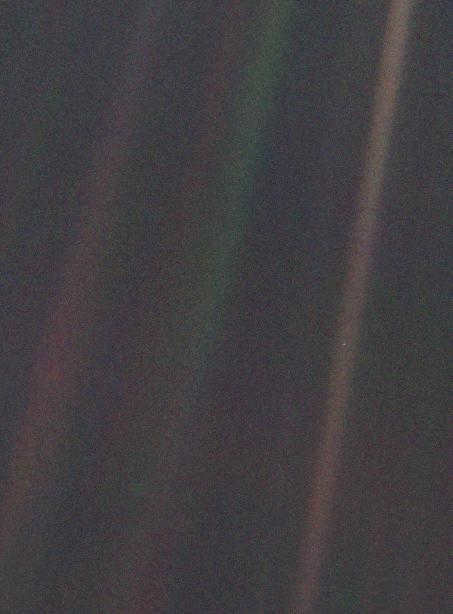
After completing its primary mission of exploring Jupiter and Saturn, Voyager 1 was directed to turn around and capture images of the inner planets of our solar system. One of these images, taken between February 14 and June 6, 1990, reveals a pale blue dot. This dot represents our Earth from a distance of six billion kilometers. The signal carrying this image traveled from Voyager to astronomers for 5.5 hours.
In 2020, NASA celebrated the 30th anniversary of the iconic image by releasing a new version titled “Return to the Pale Blue Dot.” The updated photo was enhanced, brightened, and had its graininess eliminated.
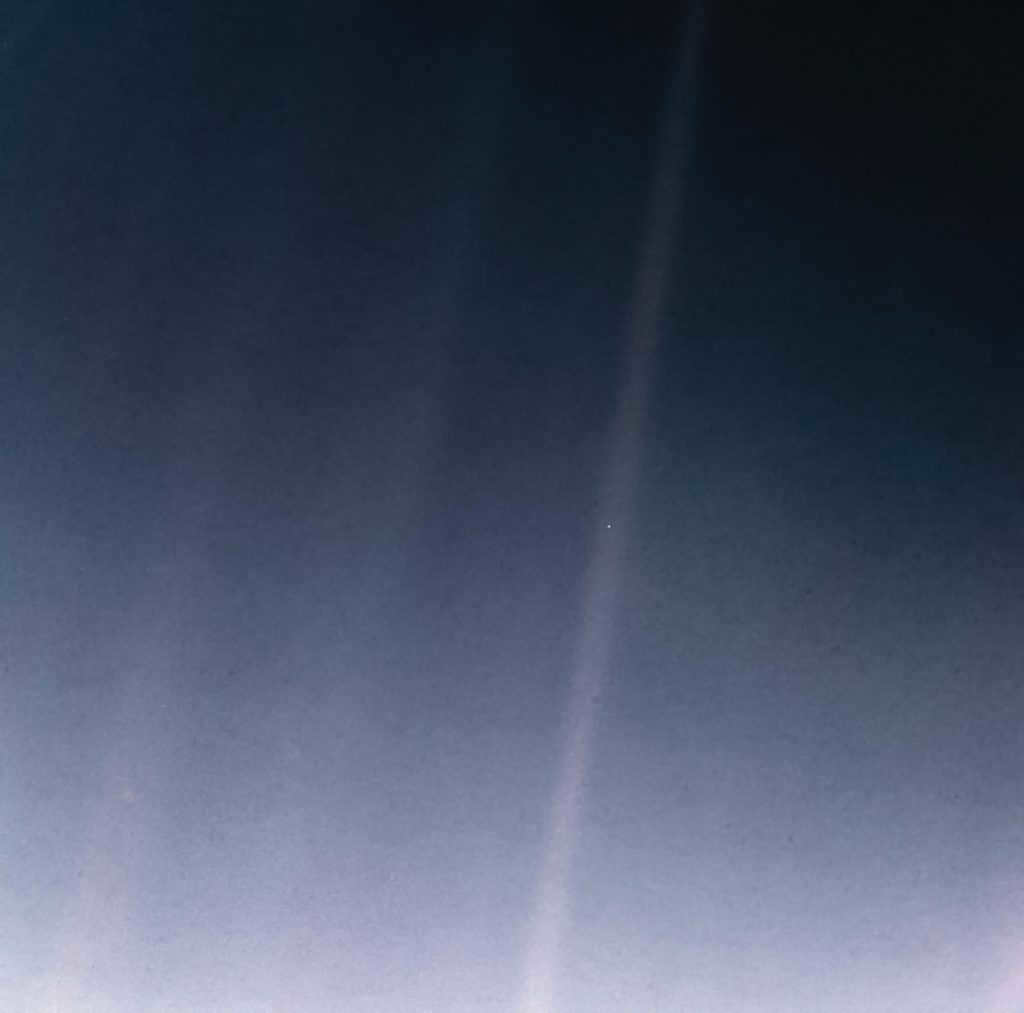
Jupiter
"Voyagers" initiated the process of capturing images of Jupiter in January 1979 – a remarkable collection of 33 thousand photographs depicting the largest planet in our solar system and its five orbiting moons were transmitted to astronomers. While scientists had previously observed Jupiter through telescopes on Earth for many years, the images obtained from these interplanetary probes led to several significant discoveries and a deeper understanding of the geological, physical, and atmospheric processes occurring on both Jupiter and its moons.



Saturn
"Voyagers" made visits to Saturn in November 1980 and August 1981. The close flyby provided astronomers with detailed photographs of the planet itself, its rings, and its moons – much better than what could be captured with telescopes on Earth. "Voyager 1 sent back images not only of Saturn, but also of its moons – Dione, Rhea, Mimas, Tethys, and Enceladus. The most significant scientific data was collected when the spacecraft came within 6.5 thousand kilometers of Titan, Saturn’s largest moon. However, the dense atmosphere prevented the surface from being photographed. "Voyager 2 transmitted 16 thousand images back to Earth, including high-resolution photos of the rings. The camera rotation system experienced some issues during the mission, causing astronomers to miss out on some of the photos they had hoped to capture.
The best photos taken by “Voyagers”” width=”640″ height=”661″>

Neptune
In 1989, Voyager-2 passed over Neptune’s north pole at a distance of nearly five thousand kilometers – this was the closest distance the spacecraft had ever approached any planet. Five hours later, the probe flew 40 thousand kilometers from the largest moon – Triton, which was the final object visited by Voyager-2.
Thanks to the images captured by Voyager-2 during its mission, scientists were able to discover a massive atmospheric vortex known as the Great Dark Spot on Neptune, which is similar to the Great Red Spot found on Jupiter. Additionally, the spacecraft also detected geysers on Triton, one of Neptune’s moons. In addition to these findings, Voyager-2 also revealed the presence of six new satellites and four rings around the planet.
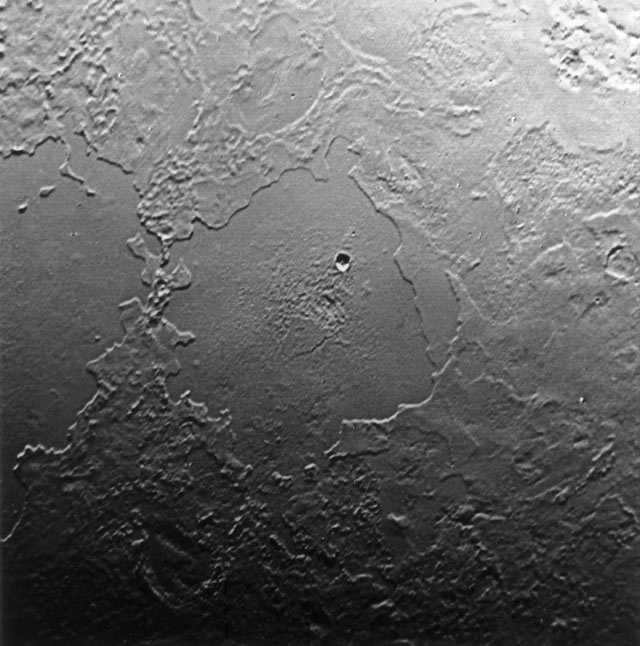
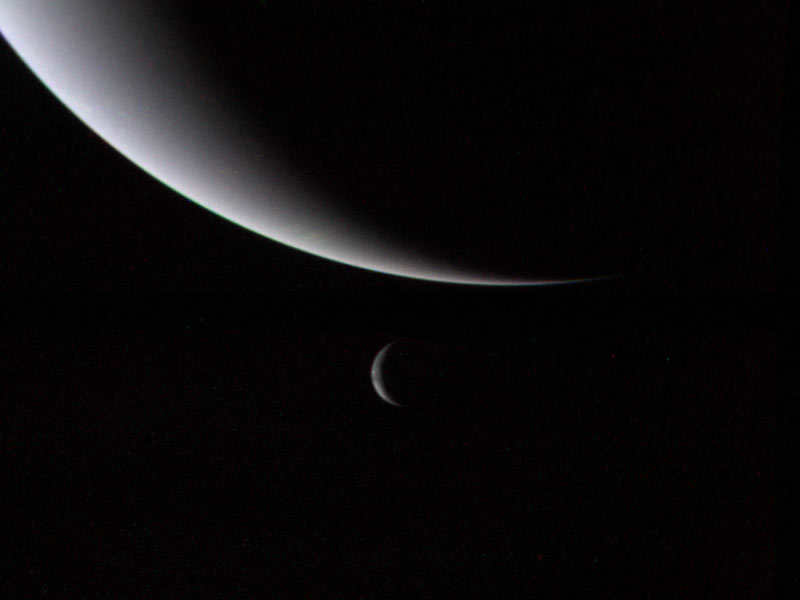
The Voyagers were equipped with two cameras – a high-resolution narrow-angle camera and a wide-angle camera with lower resolution but increased sensitivity. As the vehicles ventured further from the Sun, the planets and satellites appeared less illuminated in the camera lenses. To compensate for this, longer shutter speeds were necessary, allowing the camera sensor to capture the image. However, the high speeds at which the Voyagers were traveling would have resulted in blurry photos. To overcome this issue, the cameras were mounted on a specialized rotating platform.
At the time of the Voyagers’ construction, CCDs, which are now commonly used in digital cameras, were still in the development stage in laboratories. Therefore, the camera mechanism was similar to the cathode ray tube found in older kinescope televisions.
All the pictures were captured using a digital tape medium, which can be thought of as a type of videotape. When the Voyagers communicated with Earth, these images were replayed and transmitted at a maximum speed of 7.2 kilobits per second.
Once the Voyagers had passed all the planets and their moons, their cameras were turned off to conserve energy since there was nothing left to capture. In 2021, NASA released a photograph taken by New Horizons. Although Voyager 1 cannot be seen in the image, it is currently located at the center of the yellow circle. NASA possesses the precise coordinates of the probe as they maintain communication with it. This marked the first-ever image of an interplanetary spacecraft taken by another similar vehicle.

In addition, the “Voyagers” also have infrared and ultraviolet spectrometers, a photopolarimeter, and a complex for studying plasma:
- A Plasma Detector,
- a cosmic ray detector,
- a low-energy particle detector,
- high and low sensitivity magnetometers,
- and a plasma wave receiver.
This equipment provided astrophysicists with unprecedented scientific data, including information about the heliopause and the interstellar medium, which no one expected at the time of launch.
A message for you
Prior to the Voyagers mission, the Pioneer 10 and Pioneer 11 spacecraft were dispatched to explore the massive planets. Astrophysicist Carl Sagan proposed the idea of attaching anodized aluminum plates containing a message intended for extraterrestrial civilizations. The Voyagers also carried similar messages, although much more advanced in nature, known as the “Voyager’s gold plates.”
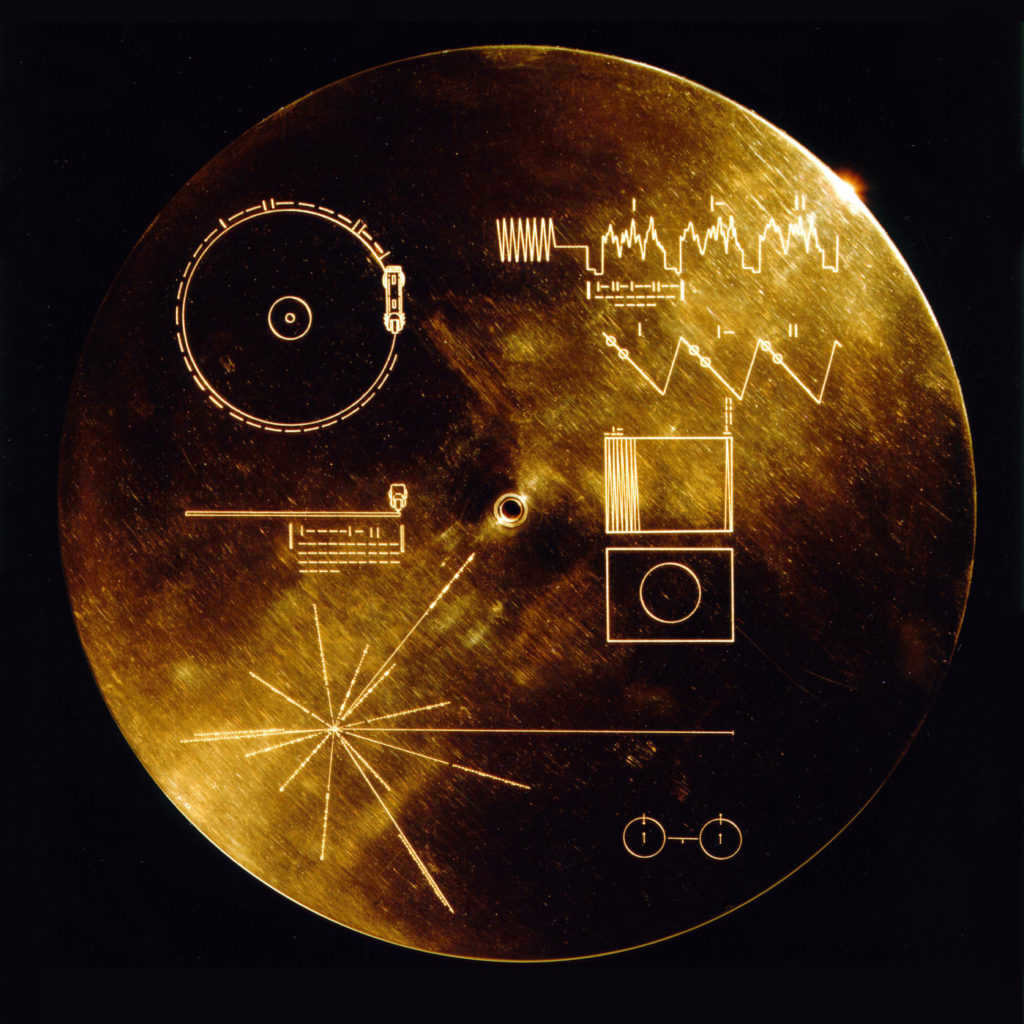
The plates are circular objects with a diameter of about 30 cm, coated in gold and enclosed in an aluminum case. The case displays a diagram that allows for the reproduction of the information stored on the record. Similar to the Pioneers, the case also includes a depiction of the Sun’s position within the Milky Way using pulsars, as well as a diagram illustrating the radiation of the hydrogen atom. These aids are intended to help any extraterrestrial beings understand our system of measurement.
The disk itself is divided into various sections. It begins with greetings in 55 different languages from around the world. The majority of the remaining content is comprised of musical compositions:
- A collection of classical pieces by renowned composers such as Bach, Beethoven, Mozart, and Stravinsky;
- Jazz compositions performed by the legendary Louis Armstrong;
- Folk music originating from diverse regions across the globe;
- sounds made by nature;
- the sounds produced by birds and animals;
- the sounds of cars, airplanes, sirens;
- signals emitted by pulsars, which are meant to explain the map on the cover;
- speeches given by then UN Secretary General Kurt Waldhammer and US President Jimmy Carter.
Lastly, the record contains a total of 116 illustrations, including 20 colored photographs. These depict the Earth as seen from space, natural landscapes found on our planet, a diagram of human DNA, anatomical diagrams, and photographs of various individuals.
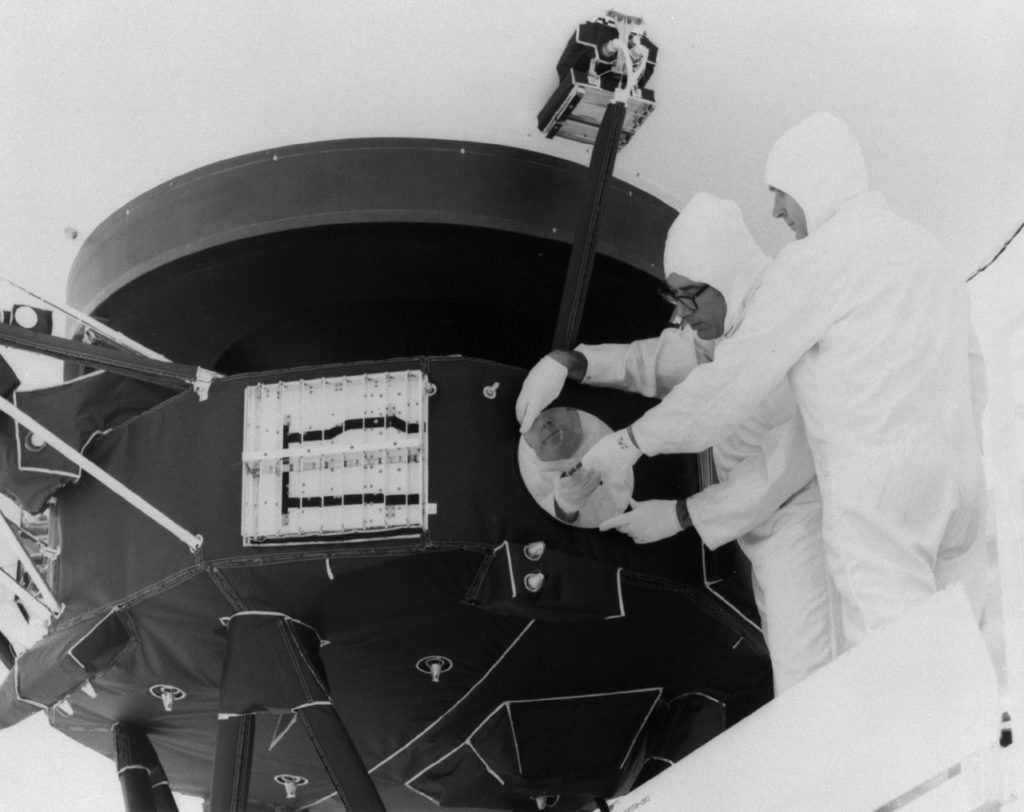
Frank Drake, the renowned astrophysicist and advocate for the scientific search for extraterrestrial civilizations, no longer views sending messages to aliens as a wise endeavor. He now recognizes the potential risks of these messages, as they could reveal Earth’s location to potentially hostile extraterrestrial beings. Furthermore, Drake highlights the fact that astronomers in the 1970s were unaware of the abundance of Earth-like planets in our galaxy, some of which are relatively close to us in cosmic terms.
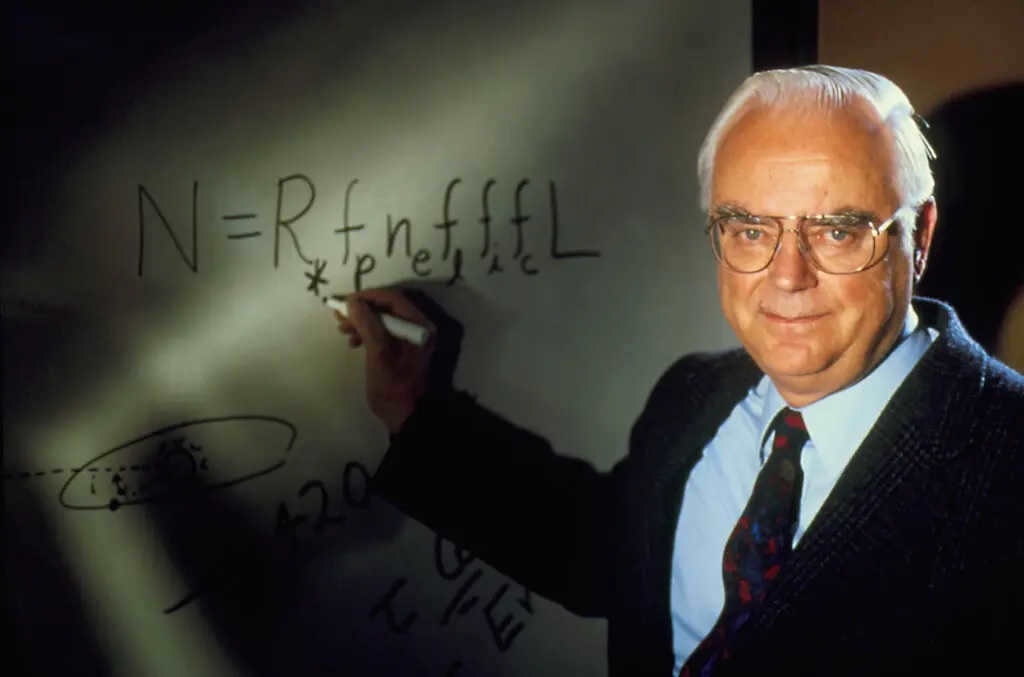
However, it is possible that by the time of the encounter with potential extraterrestrial beings, the spacecraft may have been damaged by the effects of the interstellar medium to such an extent that the information stored on the golden records cannot be retrieved.
These spacecraft were launched into space just two weeks apart. Voyager 2 was launched on August 20, 1977, and Voyager 1 was launched on September 5. They embarked on a challenging yet thrilling journey.
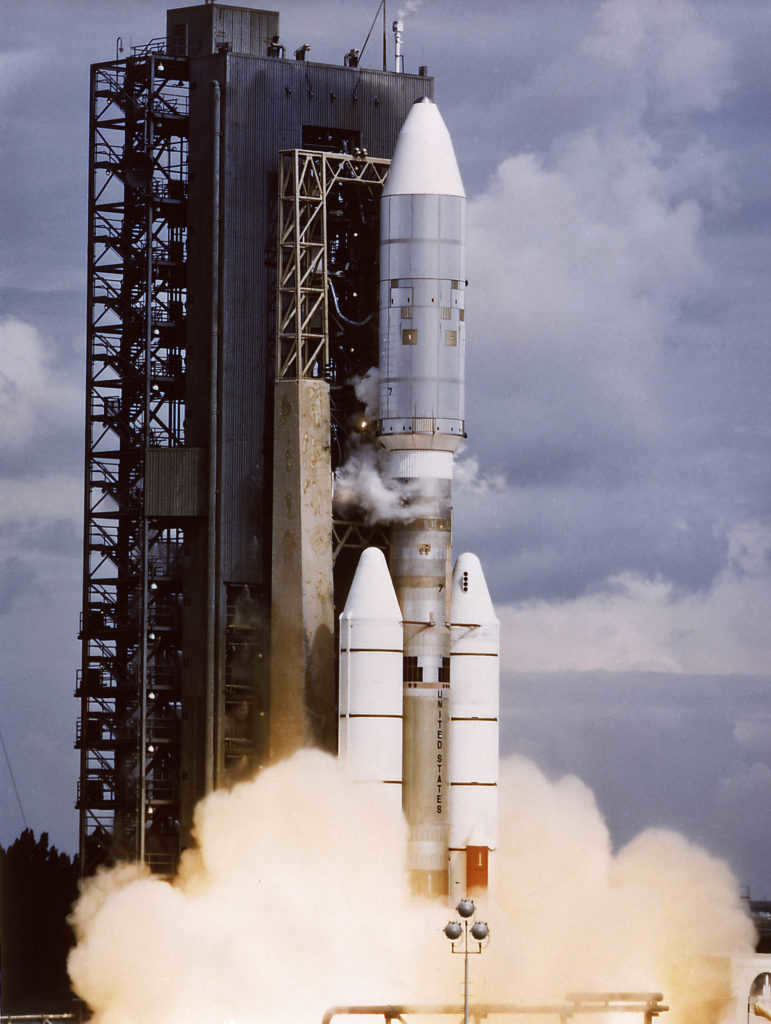
Building on the Achievements of those who came Before
The Voyagers were tasked with a scientific mission to venture into the vastness of space and uncover the mysteries of the colossal planets, Jupiter and Saturn. While Uranus and Neptune were not initially designated as primary objectives, the strategic positioning of the four outer planets allowed for gravitational assists that altered the course of these interplanetary spacecraft.
March 5, 1979 witnessed the historic arrival of Voyager 1 at Jupiter, with Saturn following closely behind. "Voyager 2 conducted a close flyby of Europa and Ganymede, two of Jupiter’s prominent Galilean satellites. It was the valuable data gathered by the Voyagers that led astronomers to posit the existence of a subsurface ocean of liquid water beneath the icy crust of these moons, potentially harboring life. By merging the information obtained from the Voyagers with data collected by the Galileo probe, astronomers constructed a comprehensive geological map of Ganymede.
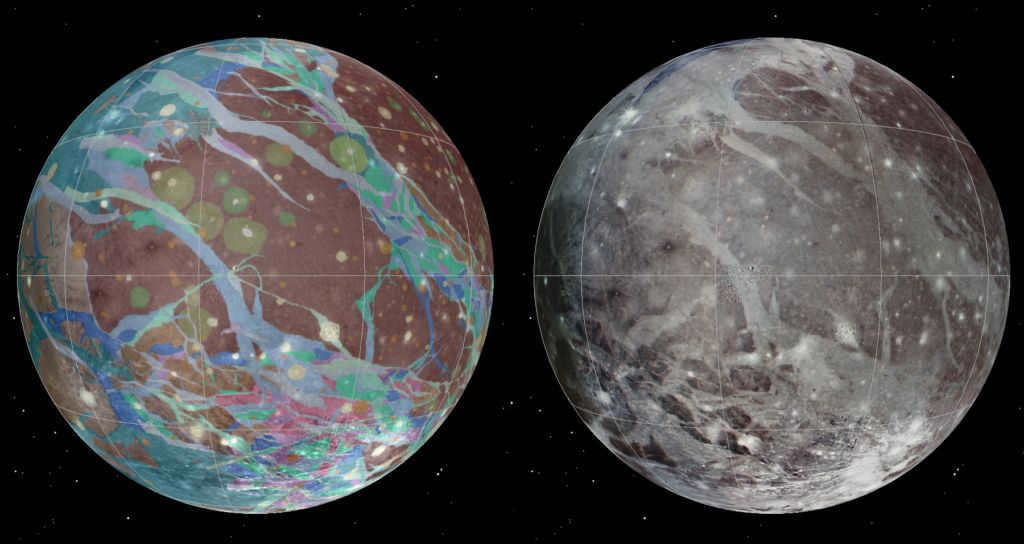
The triumph of the Voyager 1 expedition enabled scientists to implement an alternative plan and dispatch Voyager 2 to Uranus and Neptune. By utilizing gravitational maneuvers, the travel duration to the most distant planets was shortened by 18 years in comparison to the journey from Earth along the Homann trajectory.
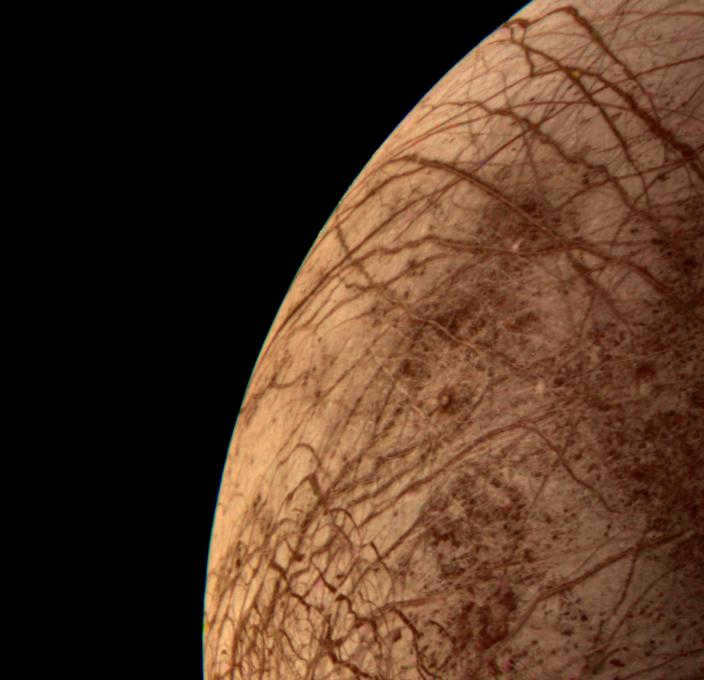
During its mission, the spacecraft made an exciting discovery by identifying 11 previously unknown satellites of Uranus and two of its rings. The images captured of Miranda, one of Uranus’ satellites, have revolutionized astronomers’ understanding of satellite lifecycles. It was previously believed that small moons would quickly cool down after their formation, resulting in a surface covered in impact craters. However, Miranda’s surface revealed valleys and mountain ranges, indicating tectonic activity. As Voyager 2 flew past Neptune, it also observed geysers on Triton and identified 6 additional satellites of the planet.
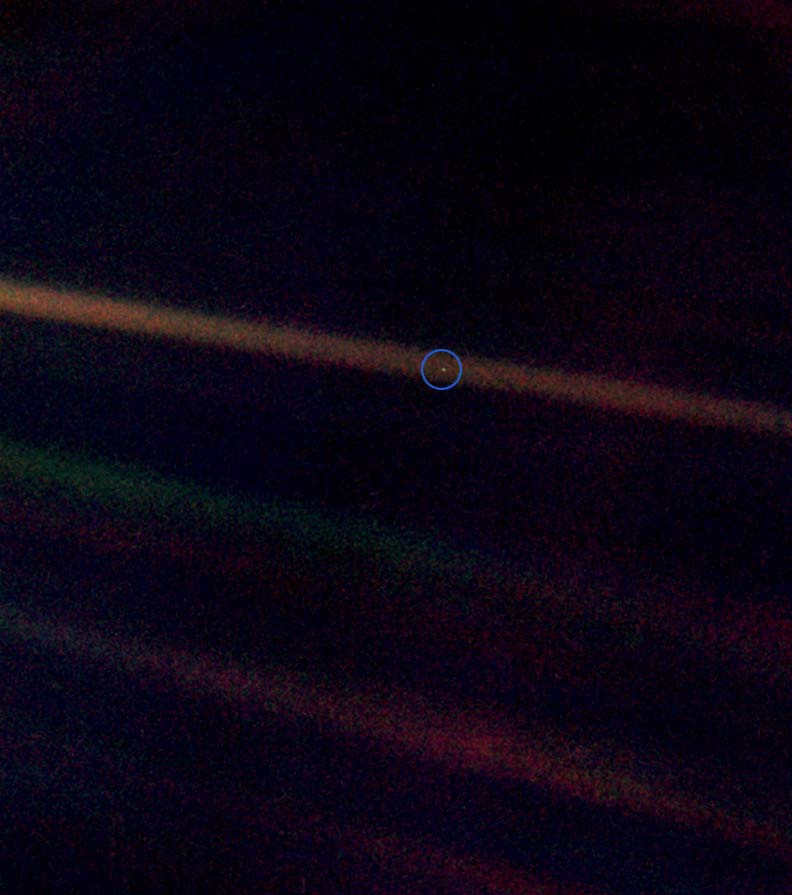
By taking advantage of the fact that Voyager 1 had already exited the heliosphere when the observations were made, while Voyager 2 was still within it, astronomers have conducted a study on the shock wave generated by heightened solar activity. Surprisingly, the pressure at the heliopause was discovered to be significantly higher than initial calculations had indicated, and a portion of the sun’s radiation had vanished upon crossing the heliospheric boundary. The reasons behind this phenomenon still remain a mystery.
In addition, no explanation has been found for the data regarding the temperature and density of the solar wind at the heliopause. Astrophysicists had anticipated that the inhibition of solar particles by interstellar radiation would result in a significant increase in temperature and density. While this did occur, the actual values were 10 times lower than what was predicted by theory. The exact location of the energy loss still remains unclear.
“For the first time ever, Voyager 1 has detected ultraviolet radiation from hydrogen that originates outside the solar system. This groundbreaking discovery was made possible by a new data processing technique developed by Rosina Lallemand from the Paris Observatory. On Earth, it is impossible to observe the spectral lines of the Lyman series due to the interference of hydrogen radiation near the Sun. Astronomers plan to further investigate this phenomenon using the “New Horizons” spacecraft. It is hypothesized that uncharged hydrogen atoms from the interstellar medium interact with the solar wind, causing their electrons to transition to a different energy level and emit radiation.”
“Voyagers” were the pioneering spacecraft that provided astronomers with valuable data on the exploration of the interstellar medium. Their findings revealed that solar radiation redirects approximately 70% of the radiation originating from the depths of outer space. Consequently, this implies that forthcoming deep space probes must be equipped to withstand and navigate through an exceptionally harsh and challenging environment.
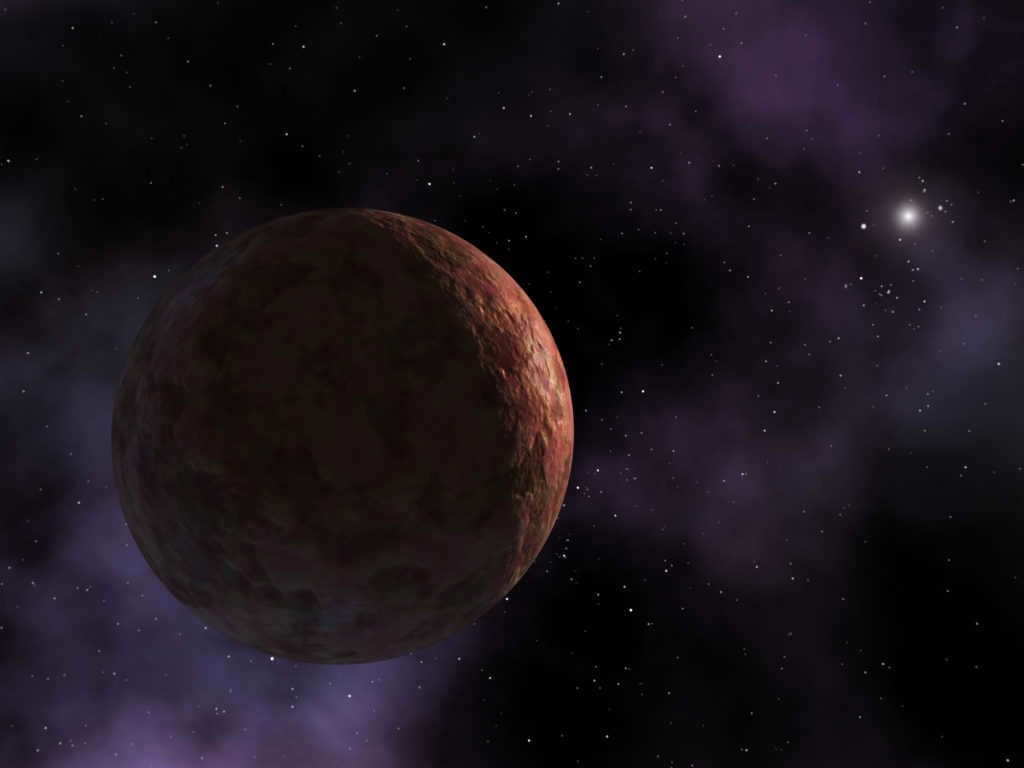
Exploring uncharted territory
It is important to realize that the heliosphere does not mark the end of the solar system in its entirety, "The Voyagers, despite venturing into the interstellar medium, have yet to venture beyond the boundaries of our stellar system. And their departure is not imminent.
The outer limit of the Solar System is commonly considered to be the boundary of the Oort cloud – a speculative region of space located past the orbits of gas giants and the Kuiper belt, containing billions of long-period comets, a few of which occasionally enter the inner regions of the Solar System. While the existence of the Oort cloud has not been definitively confirmed through instrumental means, numerous indirect pieces of evidence indicate its presence. Scientists propose that the distance from the Sun to the outer edge of the Oort cloud, and thus our entire system, is approximately 1 light year (although this measurement could be larger or smaller, as it remains uncertain).
The inner edge of the Oort cloud is so far away that it would take the Voyagers approximately 300 years to reach it. But if we consider how long it would take them to travel beyond the boundaries of our solar system, the answer is a lot longer. If we extend the boundary through the Oort cloud, it would take around 30,000 years. And if we extend it through the Hill sphere, it would take even longer. To put it in perspective, in about 40,000 years, Voyager 1 will be 1.6 light-years away from the star Gliese 445 in the constellation Giraffe. Likewise, Voyager 2 will be passing 1.7 light-years away from the star Ross 248 in the constellation Andromeda around the same time. And after a staggering 296,000 years, Voyager 2 will be 4.3 light-years away from the brightest star in the night sky, Sirius, located in the constellation of the Big Dog.
The Voyager mission is renowned for being one of the most remarkable and effective missions in the annals of space exploration. Astronomers were provided with unprecedented high-resolution images of gas giants, valuable data on the heliopause, and a wealth of other information. Presently, “Voyager 1” holds the title for the fastest spacecraft journeying beyond the boundaries of the Solar System, as well as being the most distant man-made object from Earth. On the other hand, “Voyager 2” stands alone as the sole spacecraft to have successfully explored Uranus and Neptune.
Scientists are still in the process of analyzing the vast amount of accumulated data. A recent article published by researchers at Johns Hopkins University delved into the analysis of magnetic field and radiation data collected by Voyager-2. The findings revealed that the moons Ariel and Miranda of Uranus (or possibly one of them) serve as sources of plasma in the vicinity of the planet. It is hypothesized that these satellites might have subglacial oceans that expel matter through fissures in their icy surfaces.
Currently, the Voyagers are still maintaining communication. However, by 2025, their power sources will be completely depleted. It is possible that deactivating the remaining instruments (Voyager 1 currently has four scientific instruments, while its twin has five) could prolong their lifespan by several years. Another challenge will arise from the fact that the sensor responsible for directing the radio signal from the probes to Earth relies on the Sun’s orientation. As our star becomes increasingly dim at a distance of billions of kilometers, by 2030, the transmission of information from the “Voyagers” will cease to reach Earth, even if the spacecrafts remain operational. As of now, the current status and whereabouts of the “Voyagers” can be monitored on the NASA website.

